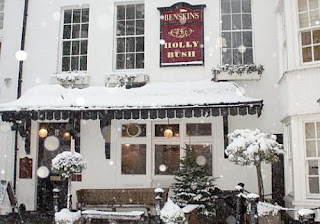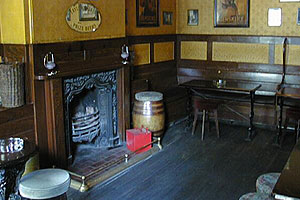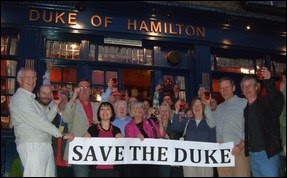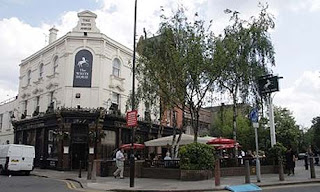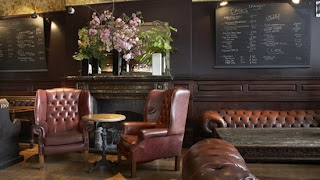You know, we’re trying to fit in here in the U.K. We say “pram” instead of “stroller,” “zed” instead of “zee,” and “whilst” instead of “while.” We look right instead of left when crossing the street, and always use the plural for collective nouns. No big deal. We’re not ugly Americans.
But the Brits are not making it easy on us. Even at Christmas.
First thing, wherever you go during the Christmas season, someone is shoving a little mince pie at you. Shopping malls, grocery stores, even business meetings—they are irritatingly ubiquitous. I don’t know even how you’re supposed to eat these things. They’re actual little pies, in miniature tin pie plates. How are you supposed to eat that? I can’t even get one out of pie plate without destroying it. And if I did get it out of the pie plate, then what? Shove the whole thing in my mouth? I’d choke. Take a single bite? I’d end up with crust crumbs all over me and mincemeat on my nose. The little bastards should come with an instruction manual. Or at least a spork.
Oh, and, in case you were wondering, there’s no actual meat in them. Which, I must say, comes as a bit of a surprise when you eat one. After all, Brits eat meat pies like Americans eat hot dogs, and what we call ground beef, they call minced. So you figure a mincemeat pie is going to have some friggin’ minced meat. Instead, you bite into one and you get a mouthful sugary, spicey, fruity, squishy goop. It’s enough to make you retch.
Second thing, all the Christmas lights over here are blue. Yes, blue. When people started putting blue lights on their houses last week, we assumed we had moved into a Jewish neighborhood that was really excited about Chanukah. But no, they were Christmas lights. Whoever heard of blue Christmas lights? What is that supposed to symbolize? Christianity is about blood. Christmas lights are supposed to be red.
The worst thing, though, is the eggnog—or, lack thereof.
Immediately after we finished our belated Thanksgiving dinner, Heidi happily trotted down to Waitrose to pick up the Christmas season’s first carton of eggnog. We love eggnog. We only buy the expensive stuff, like Broguiere’s in the old-fashioned glass milk bottles from Bristol Farms. Heidi likes it in a red wine glass with a bit of Armagnac and a hint of nutmeg; I like it in an old fashioned glass with so much dark spiced rum that it begins to curdle. Stefan drinks it straight from the bottle, a quart at a time.
So there’s Heidi at Waitrose and she can’t find eggnog anywhere. No Broguiere’s. No Alta Dena. Not even that crappy Borden’s stuff that comes in a can, like it’s meant to be stored in a fallout shelter and enjoyed during a nuclear winter. Nothing.
So she asks one of the helpful Waitrose employees, Where is the eggnog?
The guy replies, Egg what?
Egg what? Egg WHAT? Are you daft, Mr. Waitrose person? Rumour has it (notice the conformist “u”) you people invented this stuff. And now you don’t even know what it is? What kind of deprived backward culture has this become? I realize you had rationing in this country for nine years after World War II while America was living a post-war economic boom, but honestly, do you all of you outside of the inbred upper classes have to live like Okie grandmothers from the Dust Bowl era?
So Heidi kindly describes for the (presumably mentally challenged) man exactly what eggnog is— Eggs. Sugar. Cream. You know, eggnog.
Oh, he says distastefully. That sounds rather indulgent.
Just like that. With the dul in audible italics.
Of course it’s indulgent, you moron! It’s eggnog!!
So, yeah. Christmas in the U.K. Mince pie. Blue lights. No friggin' eggnog. It’s just not the same.



